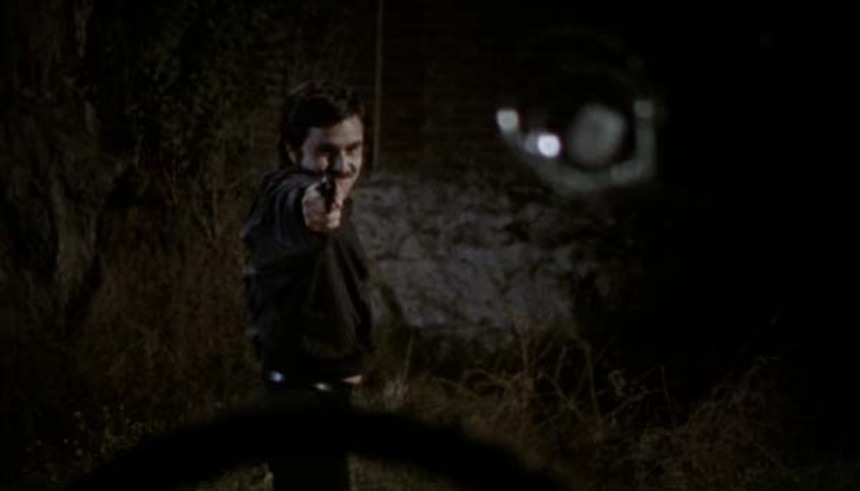FIDOCS 2013 Review: PENA DE MUERTE (aka DEATH PENALTY) Mixes Experimental And Classic Documentary Styles Perfectly

The latest edition of FIDOCS (Festival Internacional Documentales Santiago Chile) has already passed and yet here we are, reviewing what was maybe the best Chilean film that I saw in the festival. I took this long because it's one of the most complex films that I've seen in a while, one that requires a wealth of knowledge (provided in the film) that is almost unrelatable to an audience that didn't know about the facts this documentary is trying to take a look at.
Here we have a documentary in the vein of those made by Errol Morris, 'talking head' interviews and all that, but in specific it reminds of his 1988 film The Thin Blue Line, where he used filmed re-enactments and fictionalizations of situations and crimes to prove the innocence of a man. Here, the director Tevo Díaz (Señales de Ruta, a short film that I consider the best Chilean film ever made) recreates some moments of the tense days of what has been described as 'the killings of the Viña del Mar psychopath'.
Pena de muerte (aka Death Penalty) manifests its intentions from the start. It's at the same time informative of the processes and facts that happened starting 1980 in Viña del Mar, where more than 10 people were killed in over a year following a similar modus operandi, and it follows a chronological approach, interviewing the detective in charge, lawyers, victims and the psychologist who was in charge of creating a profile of the killer and later interrogate the suspects.
Yet, at the same time as he mixes the facts with the opinions of the interviewees, he also enters the re-enaction of the acts not always in a factual manner and experimenting mostly with the manner in which it's filmed, using 8 and 16mm film, as well as HD cameras to shoot footage that looks as if it was made at the time that the killings were happening. It's important to note that the only stock footage present in the film is always introduced in the same manner, a journalist speaking to the camera and presenting the latest facts. (The same journalist who at the time reported the facts on television is now the narrator of the film.)
The movie has a clear hypothesis, if not certainty, on the identity/identities of the killer/s of the 10 people, and while this might sound like a spoiler, it's not, because it's factual. When the film gets to the part where Gubler, one of the most powerful and rich people in Viña del Mar, is signaled as a possible culprit in this case, the movie takes some speed and at the same time a clear position towards how his position of power helped him when he was convicted so he could get away and live the rest of his life out of prison. It was a failure of the Chilean judicial processes, but at the time, under a severe dictatorship, there were many things that failed, especially in terms of justice and equal treatment between those who had the power through money and those who didn't.
When the movie focuses into the lives of the two policemen who were accused of the crime and then condemned to the last official death penalty given in the history of Chile, the movie also experiments with the way that the re-enactments work. The director himself spoke after the screening in the festival and talked about how the action of the execution is seen in two ways: a full-HD production and then a crummy made-for-TV with poor quality and colors.
He said that he treated the material as if he took excerpts from non-existent movies that were made about the case, but since there haven't been any movies about the killings nor about the execution of the two policemen, he filmed them in different ways: a made for TV production from the same time that the events happened and a modern quality production. He nails those styles and also speaks lots about what the reality is and how we see it mediated through the visual elements in our daily life.
It is clear that this is a great movie, one of the greatest documentaries that played at the festival, with a distinct visual style that mixes animation and post-produced filmed footage to retell a modern audience about how power can even buy the killing of 'lesser' people in the eyes of those who have the power and the mind to think that way.
The dictatorship made them brave, and the dictators were those who hid it, when this movie gets released to the public in November (through the MiraDoc initiative in Chile) people will start asking questions, and someone must answer them.







